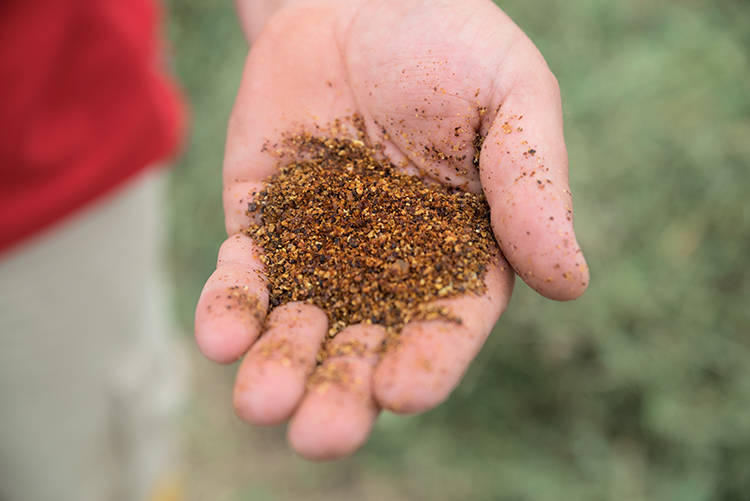
The use of by-product feeds has been a longtime dairy farmer practice to effectively recycle valuable nutrients that are either indigestible or undesirable for human consumption but offer nutritional benefits to cows.
Dairy farmers’ use of by-product feeds has made for a key part of their stewardship story, but beyond testimonials, there hasn’t been extensive quantifiable research to show just how eco-friendly and widespread this practice is.
Checkoff-led research done through the farmer founded Innovation Center for U.S. Dairy shows by-product feeds offer a far more positive environmental impact than we imagined.
The research aligns with the EPA’s Food Recovery Hierarchy, which prioritizes actions organizations can take to prevent and divert wasted food. Among the EPA’s recommended steps is using food scraps for animal feed, which includes unavoidable waste such as by-products from production, postharvest, and processing stages of human food supply chains.
Our work began with surveys sent to dairy nutrition consultants and feed industry representatives across the country to learn more about the types of by-product feeds and volume used. We learned that about one-third of a cow’s diet – representing anywhere from 32 to 41 million metric tons nationally each year – consists of a by-product from crop or food company production.
We then conducted research to determine the environmental impact if these by-products did not pass through a cow and instead ended up in a landfill or were composted. This is where dairy’s sustainability story reaches new, science-based heights.
Our findings show that including by-product feeds in rations results in considerably less enteric and manure methane and manure nitrous oxide than landfill disposal. In fact, we saw a 49-fold more positive environmental impact than if the by-product had simply been disposed. Our examination of composting showed a lesser but still positive impact of being nearly five-fold more environmentally friendly.
Some other items of interest from our research include:
• Cows in the West consume the most by-products, followed by the South, Northeast, and Midwest. These differences reflect regional variations in by-product cost, availability, and other factors.
• Corn distillers grains are fed at the highest rate of all by-products, with cows in the West consuming the most. Canola meal ranked second.
• On average, feed by-products supply 54% of the crude protein needed by U.S. lactating dairy cows with soybean meal, canola meal, distillers grains, whole cottonseed, and corn gluten meal being the greatest sources.
• By-products supply 61% of the sugar for lactating cows. These sugars supply a portion of a cow’s energy needs and may improve milk production while reducing nitrogen waste due to their rapid digestion rate in the rumen.
• Lactating cows receive an average of 46% of their dietary fat from by-product sources.
I encourage farmers to use our findings to further bolster their farm’s sustainability story and show how dairy cows are indeed the ultimate upcyclers. The conversation on sustainable food production will only gain more momentum, and this is yet another powerful proof point that our nation’s dairies are environmental solutions.
Second, I suggest farmers continue to lean on the expertise of their nutritionists to discover more ways by-product feeds can be considered for their rations. New by-product feed opportunities come about often, and some may make good sense for farmers.
Having the research validate what farmers have known for a long time about the effectiveness of by-product feeds delivers the best possible environmental and socioeconomic outcome.
To learn more about your national dairy checkoff, visit www.USDairy.com or send a request to join our Facebook group. To reach us directly, send an email to TalkToTheCheckoff@dairy.org.





